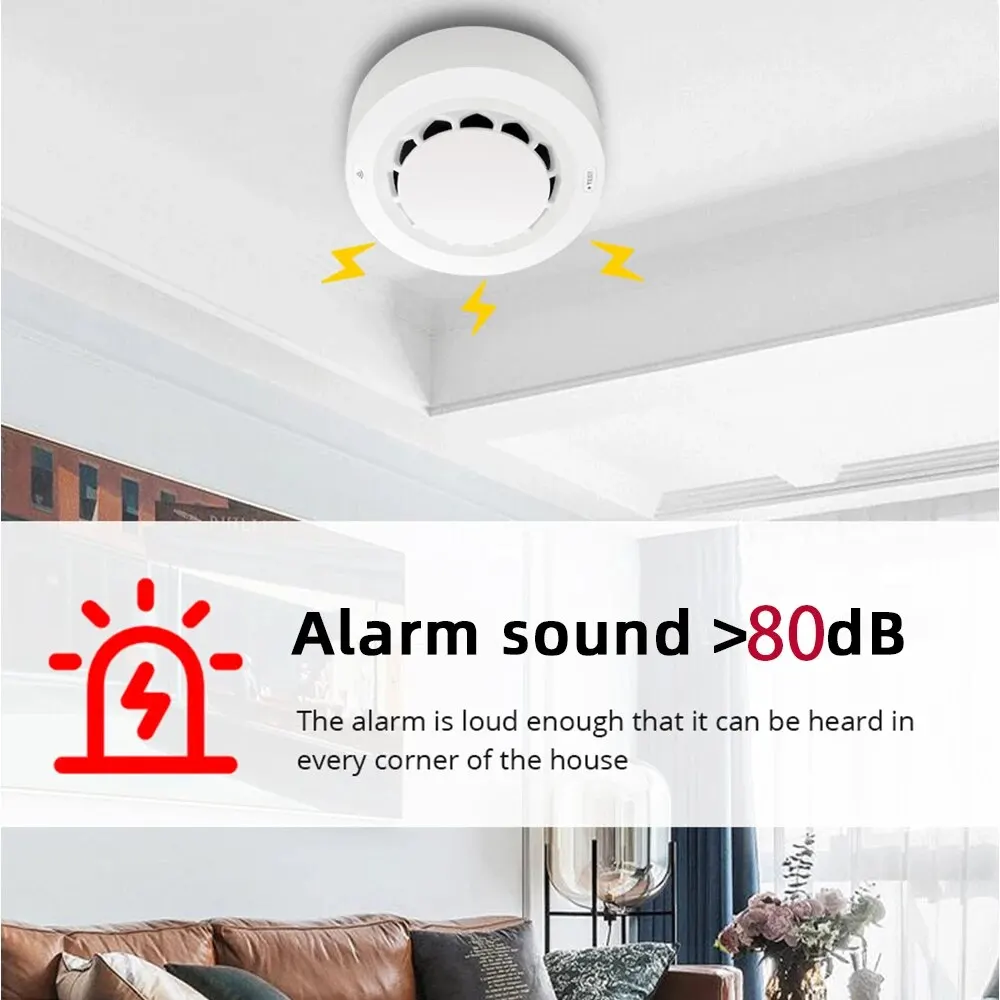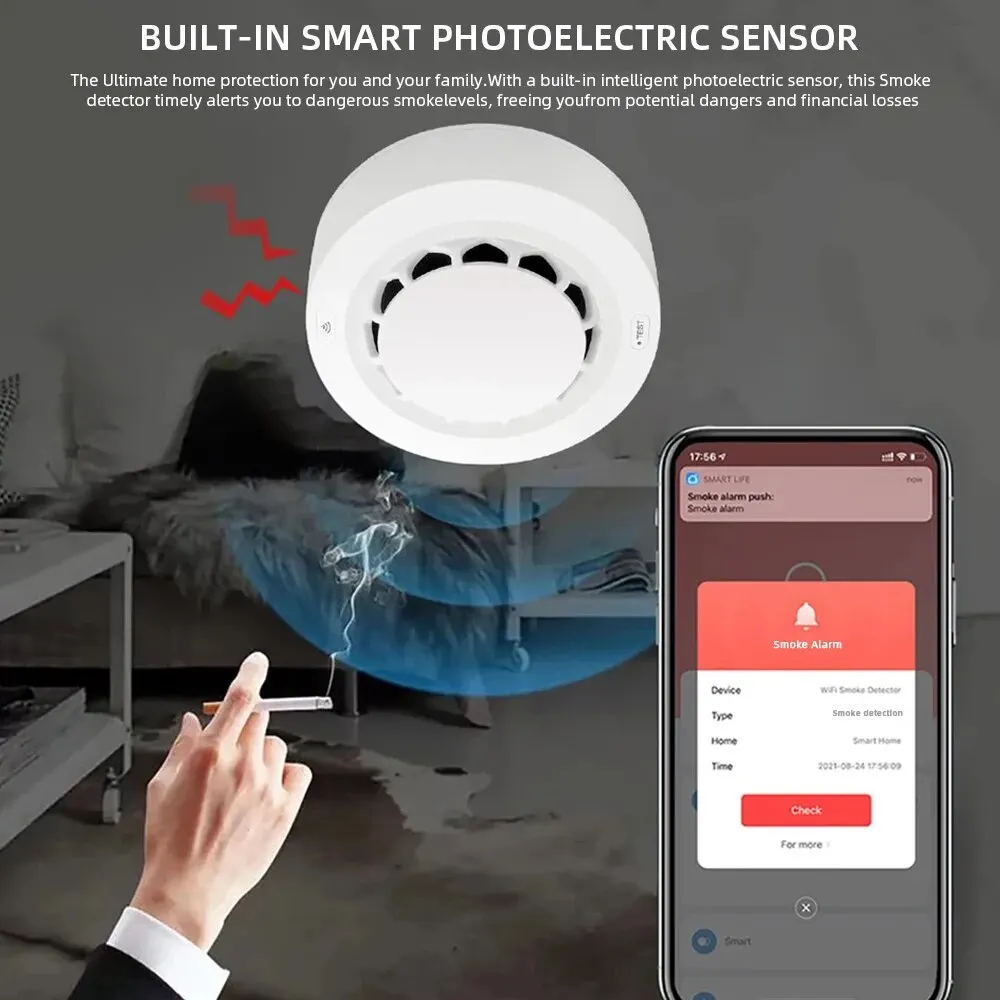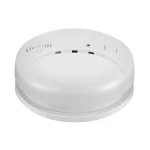Understanding Why Smoke Alarms Beep
Smoke alarms beep to catch your attention for a few important reasons. These reasons include alerting you to a fire, signaling that batteries need replacement, identifying errors with the alarm’s processor, and highlighting wiring problems. Beeping sounds are design features intended to prompt immediate action, ensuring safety.
Common Triggers for Smoke Alarm Beeping
Several triggers can cause your smoke alarm to beep:
- Low Battery: The most common cause of a beeping smoke alarm is a low battery that needs replacing.
- Processor Error: If there’s a malfunction within the alarm’s internal processor, it may beep to warn you.
- Wiring Issues: For hard-wired alarms, beeping may indicate a problem with the electrical wiring.
- Environmental Factors: High or low temperatures, steam, or smoke can set off the alarm.
Always consider a beep as an indication to check the alarm and not to ignore it.

Types of Smoke Alarms and Their Power Sources
Smoke alarms differ mainly in their power sources:
- Battery-Powered: These common types use replaceable batteries and beep when these batteries are low.
- Lithium Battery Alarms: These have sealed batteries designed to last longer but still require eventual replacement.
- Hard-Wired Alarms: The premium option, these alarms run on home electricity and use batteries for backup.
Choosing the right smoke alarm involves understanding these types and considering which is best for your home’s safety. Regular maintenance and prompt action when beeping occurs can prevent malfunctions and keep your alarms ready to alert you in case of fire.
Initial Troubleshooting Steps
When your smoke alarm won’t stop going off, start with these initial troubleshooting steps. Addressing these common issues can often resolve the persistent beeping quickly.
Checking the Battery Connection
First, ensure the battery connection in your smoke alarm is secure. Incomplete contact between the battery and the terminals often leads to unnecessary beeping. Open the battery compartment:
- Remove and reinsert the battery, making sure it fits snugly.
- Check for any corrosion on the terminals, and clean if necessary.
- Make sure the battery drawer or compartment is fully closed.
By ensuring a proper battery connection, you may stop the smoke alarm from beeping and avoid the need for further action.
Ensuring Proper Placement Away from Kitchen and Bathroom
The location of your smoke alarm can affect its sensitivity and functionality. Avoid placing smoke alarms too close to the kitchen or bathroom doors:
- Heat and steam from cooking and showers can trigger the alarm.
- Place smoke alarms at least 10 feet from cooking appliances and outside of bathrooms.
- Consider moving existing alarms if they are positioned in these problematic areas.
Proper placement will reduce false alarms caused by everyday activities like cooking and bathing, helping to silence the alarm when there’s no real danger.
Advanced Solutions for Persistent Beeping
When initial troubleshooting doesn’t silence your smoke alarm, consider these advanced solutions.
Handling Hard-wired Smoke Alarms
Hard-wired smoke alarms offer robust protection but can be tricky when they won’t stop beeping. First, try resetting each unit. If one alarm malfunctions, it might trigger others connected on the same circuit. Press the reset button on each smoke alarm. If beeping persists, disconnect the alarms temporarily to identify if a particular unit is faulty. Lastly, flipping the circuit breaker off and then on may resolve hidden electrical issues causing the beeping.
Dealing with Faulty Wiring and Processor Errors
Faulty wiring and processor errors can cause continuous beeping. Inspect the wiring connections if accessible, or better yet, consult an electrician. Loose or damaged wires should be repaired promptly. For processor glitches, try a hard reset of the alarm. If the problem is persistent, replacing the alarm might be necessary. Always consider using alarms with diagnostic features to identify and alert about specific faults more efficiently.

Regular Maintenance Tips
To keep your smoke alarm functioning properly, regular maintenance is key. Simple steps can ensure it remains in good working condition and ready to alert you in an emergency.
Best Practices for Battery Replacement
Regularly changing batteries is essential for smoke alarms, especially those that are solely battery-powered. Here are some best practices:
- Set a Schedule: Replace batteries once a year, or as recommended by the manufacturer. A good time is when you adjust clocks for Daylight Saving Time.
- Choose Quality Batteries: Use long-lasting batteries for better performance. This could mean fewer replacements and less beeping.
- Keep Spare Batteries: Always have extra batteries on hand. This avoids delays in replacing depleted batteries.
- Mark the Date: Label batteries with the replacement date. It helps track their lifespan and reminds you when it’s time to replace them.
By following these practices, you reduce the risk of your smoke alarm failing to warn you of danger.
Importance of Regular Testing and Maintenance
Beyond battery replacement, regular testing and maintenance are vital:
- Test Monthly: Press the test button on your smoke alarm monthly. This checks both the power supply and the sounding mechanism.
- Clean Regularly: Dust and debris can block sensors. Clean your smoke alarm with a soft brush or vacuum attachment every six months.
- Replace as Needed: Even with regular maintenance, smoke alarms wear out. Replace your smoke alarm every eight to ten years, or as advised by the manufacturer.
Consistent testing and upkeep help ensure your smoke alarm won’t stop going off without cause, giving you peace of mind and enhancing safety.
Replacing Your Smoke Alarm
It’s crucial to know when it’s time to replace your smoke alarm. If troubleshooting doesn’t fix the beeping, it might be time for a new unit. Here are signs that you need a replacement:
When to Consider Replacing the Entire Unit
- Age: If your smoke alarm is over 10 years old, replace it. Check the manufacture date on the back.
- Persistent Issues: After replacing batteries and troubleshooting without success, the unit likely needs replacing.
- Damage: Visible signs of damage or malfunction mean your alarm’s reliability is compromised.
- No Response to Testing: Regular tests fail to trigger the alarm or produce a weak sound.
- End of Life Signal: Some alarms chirp to indicate they’ve reached the end of their service life.
Knowing when to replace your smoke alarm is part of responsible home safety.
Choosing the Right Smoke Alarm for Your Home
Selecting the right smoke alarm for your home is vital. Consider these factors:
- Type: Choose from battery-powered, lithium battery, or hard-wired models.
- Features: Look for alarms with silencing buttons for false alarms and interconnectivity for larger homes.
- Compatibility: Ensure new smoke alarms are compatible with existing home systems.
- Certification: Choose alarms certified by reputable organizations for safety standards.
By selecting the correct type and maintaining them well, you enhance your home’s safety.

Last Resort Measures
When all previous attempts fail to silence a beeping smoke alarm, it’s time for last resort measures.
Disconnecting and Safely Removing Smoke Alarms
If persistent beeping continues, here’s how to disconnect and remove your alarms safely:
- Turn off the power at the circuit breaker to ensure safety.
- Unmount the smoke alarm from its bracket on the ceiling or wall.
- Detach the alarm by unclipping the connector at the back.
- Remove batteries to fully power down the unit.
Always handle smoke alarms with care, even when they malfunction.
Steps to Take When All Else Fails
When disconnection doesn’t end the beeping, consider these steps:
- Check the manufacture date; replace if the unit is outdated.
- Inspect for residual debris or dust; a thorough clean can help.
- If beep persists, invest in new smoke alarms;long-term safety is paramount.
- As a temporary fix, place the alarm in a spot where its sound is less bothersome.
Remember, these steps are a last resort after all other methods did not work.
Safety First
When it comes to smoke alarms, safety should be your top priority. Although beeping alarms can be a nuisance, it’s crucial to never ignore them.
Always Assume Beeping Indicates Potential Danger
Every beep from your smoke alarm is a potential alert for a real threat. Whether it’s the smoke alarm that won’t stop going off or a sporadic chirp, treat it as a warning. When your smoke alarm beeps, always:
- Stop what you’re doing.
- Check for signs of smoke or fire.
- Review previous troubleshooting procedures.
- Ensure everyone in the home is aware of the beeping alarm.
Reacting quickly can mean the difference between safety and disaster.
Contacting Professionals for Assistance
Sometimes, diagnosing the issue with your smoke alarm requires expert help. If you’ve tried every solution and the smoke alarm won’t stop going off, it’s time to call a pro. Experts can assist with:
- Identifying faulty wiring or alarm malfunctions.
- Installing new smoke alarms correctly.
- Providing peace of mind through professional assessment.
Contact a certified electrician or a fire safety professional. They know how to handle persistent alarms safely and effectively. In emergencies, don’t hesitate to call your local fire department. They are equipped to deal with potential fire hazards and can ensure your safety.


